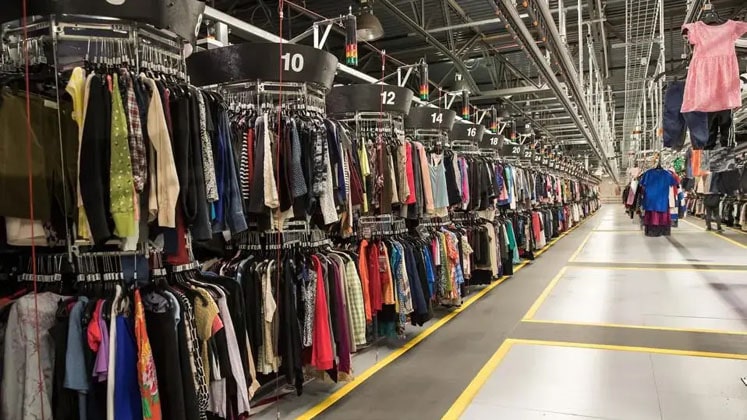
The global home textile market in 2024 was marked by changing consumer preferences, supply chain disruptions, and a growing emphasis on sustainability. This report looks at the key trends that defined the year, and analyzes the sector's performance against projections, identifies the winners and losers in global trade, gives the outlook for 2025.
Market influencers
Several factors played a crucial role in shaping the home textile market in 2024.
Economic volatility: Global economic uncertainties, including inflation and recessionary fears in major markets, impacted consumer spending. While some consumers prioritized essential home textiles, discretionary purchases like decorative items saw a dip.
Shifting consumer preferences: Consumers increasingly sought out sustainable, ethically sourced, and high-quality home textiles. This trend was pushed by demand for organic cotton, recycled materials, and handcrafted products.
Supply chain disruptions: Lingering effects of the pandemic, coupled with geopolitical tensions, continued to disrupt supply chains. This led to increased lead times, higher transportation costs, and challenges in sourcing raw materials.
E-commerce boom: Online sales channels continued to gain traction, with consumers embracing the convenience and variety offered by e-commerce platforms. This pushed traditional retailers to enhance their online presence and omnichannel strategies.
How the market fared
While the global home textile market saw growth in 2024, it fell short of initial projections. Market research firm Statista estimated the market size will touch $135 billion in 2024, but preliminary data suggests it is around $130 billion. This discrepancy can is due to economic instability and supply chain glitches.
Table: Home textile market in 2024
|
Region |
Projected growth (%) |
Actual growth (%) |
|
North America |
4.5 |
3.8 |
|
Europe |
3.2 |
2.5 |
|
Asia Pacific |
6.8 |
6.1 |
|
Latin America |
5.1 |
4.2 |
|
Middle East & Africa |
5.9 |
5 |
Source: Statista, Industry Reports)
In the realm of international trade, some countries emerged as winners while others faced challenges.
Winners
India: Leveraging its competitive labor costs and strong manufacturing base, India solidified its position as a leading exporter of home textiles. Its focus on value-added products and sustainable practices further enhanced its appeal.
Vietnam: Continued its upward movement in the global textile market, capitalizing on trade agreements and investments in manufacturing capacity.
Bangladesh: Remained a major player in the supply of bed linen and towels, benefiting from its cost-effectiveness and established supply chains.
Losers
China: Dealt with issues like rising labor costs, trade tensions, and increasing competition from other Asian countries.
Pakistan: Struggled with political instability and economic challenges, impacting its export competitiveness.
Table: Home textile global import and export scenario in 2024
|
Country |
Imports in 2023 % bn) |
Imports in 2024 ($ bn) |
% change |
|
USA |
22.8 |
23.5 |
+3.1 |
|
Germany |
8.9 |
9.1 |
+2.2 |
|
UK |
7.2 |
7.4 |
+2.8 |
|
France |
5.8 |
6 |
+3.4 |
|
Japan |
4.9 |
5.1 |
+4.1 |
|
Canada |
4.1 |
4.3 |
+4.9 |
|
Country |
Exports in 2023 $ bn) |
Exports 2024 ($bn) |
% change |
|
China |
35.2 |
33.8 |
-4 |
|
India |
28.5 |
30.1 |
+5.6 |
|
Pakistan |
10.2 |
9.8 |
-3.9 |
|
Vietnam |
8.7 |
9.5 |
+9.2 |
|
Bangladesh |
7.5 |
7.8 |
+4.0 |
|
Turkey |
6.3 |
6.5 |
+3.2 |
Source: WTO, ITC Trade Map) And much like other sectors in the textile industry, home textile too faced several challenges through 2024. On major challenge was meeting growing demand for sustainable products while managing costs and ensuring transparency. As John Smith, CEO of a leading home textile brand says, “Sustainability is no longer a trend, it's an imperative. Consumers are demanding it, and brands that fail to deliver will be left behind." Building more resilient and diversified supply chains to mitigate disruptions also became crucial. And competition intensified from emerging markets so to keep ahead stakeholders needed continuous innovation and differentiation.
For example, Welspun India, a leading global home textile manufacturer, has embraced sustainability and innovation to thrive in the competitive market. Their initiatives include: Wel-Trak 2.0 A patented end-to-end traceability technology that ensures transparency and ethical sourcing of raw materials; investment in recycled and organic cotton production; focus on water conservation and energy efficiency in manufacturing processes.
Despite the challenges, 2024 witnessed numerous innovations in the home textile sector. For example, integration of technology into home textiles gained momentum, with products like sleep trackers, temperature-regulating bedding, and antimicrobial fabrics gaining popularity. "The integration of technology into home textiles is transforming the industry. We're seeing incredible innovations that enhance comfort, convenience, and well-being," says Jane Doe, Textile Industry Analyst.
Brands increasingly adopted circular economy principles, focusing on recycled materials, reduced waste, and product longevity. And customized home textile solutions, allowing consumers to personalize designs, colors, and materials, gained traction.
Outlook for 2025
Despite these challenges, the outlook for the home textile sector in 2025 remains cautiously optimistic. Market research firm Grand View Research projects the market will reach $142 billion in 2025 numerous factors acting as catalysts. Growing urbanization and rising disposable incomes in developing economies will boost the sector. Similarly increasing focus on home décor and interior design will augur well. And continued growth of e-commerce and online sales channels will also boost the sector.











